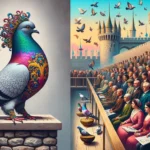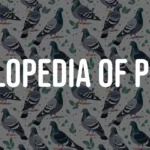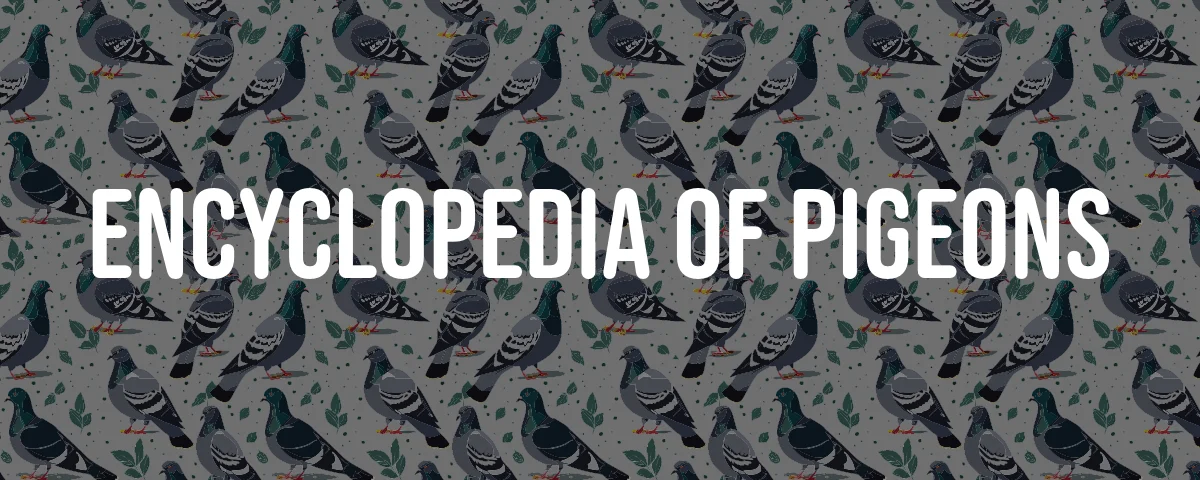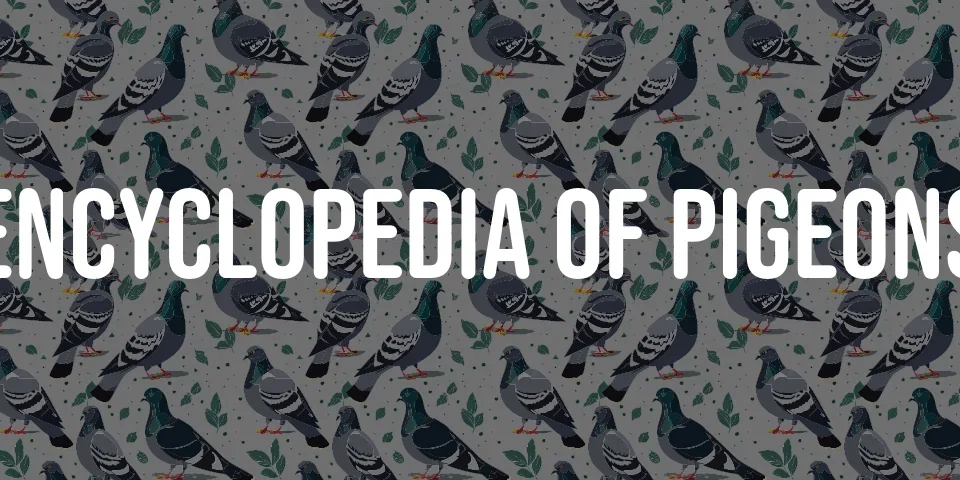Koenigsberg Reinaugen Tumbler: Origins and History
Let’s rewind to the days when Koenigsberg—yes, the old Prussian city hugging the Vistula—was more than a dot on a map. Farmers there, sleeves rolled up and eyes skyward, began shaping what we now call the Koenigsberg Reinaugen Tumbler (or, if you’re feeling fancy, the Königsberger Reinauge). The 19th century was a peculiar time: people cared deeply about their crops, their folklore, and—no joke—their pigeons. Not just any pigeons, mind you, but birds that could tumble through the air with such flair that even the local cats looked up in awe.
Picture a riverside morning: mist rising, a farmer’s boots squelching in the mud, and above, a silhouette looping and twisting—part spectacle, part tradition. That’s the Reinauge for you. It wasn’t just about having a bird on the roof. These pigeons became woven into the local identity—symbols, performers, companions, and, in a way, living testaments to rural ingenuity.
What did breeders care about? Well, the answer isn’t as simple as “pretty feathers.” They obsessed over three things, but never in equal measure, nor for the same reasons:
- aerial wizardry—if your pigeon couldn’t out-fly the neighbor’s, what was the point?,
- looks—there’s an old Prussian saying: “A plain bird is just a bird.”,
- something harder to pin down: cultural heft. The kind of pride you could serve up with black bread and stories at the end of the day.
Generation after generation, pigeon keepers tweaked, refined, doubled back, and sometimes just got lucky. The result? A breed that refuses to be forgotten, still strutting its stuff in the margins of history books and the hearts of those oddball enthusiasts who’d rather talk about tumblers than taxes.
Koenigsberg and the Prussian Region
Koenigsberg. Say it out loud and you can almost hear the echo of iron church bells and market chatter. Pigeon breeding there wasn’t just a pastime—it was sport, artistry, and quiet rebellion rolled into one. The city, with its unpredictable Baltic weather and patchwork fields, proved to be a sort of living laboratory for feathered experiments.
Prussia’s pigeon legacy? Not dusty trophies on a shelf, but a living, fluttering tradition. Breeders obsessed over:
- flight that wasn’t just functional, but balletic,
- feathers that caught the sun just so,
- a flock’s uncanny ability to look both regal and mischievous in the same afternoon.
The Reinauge didn’t just pop up out of nowhere. It’s a product of place—stormy skies, stubborn people, and an aesthetic that leans toward the dramatic. For the locals, these birds became shorthand for what it meant to be from Koenigsberg: proud, resourceful, maybe a little eccentric.
Development in the Vistula Region
The Vistula—a river that’s seen more secrets than a confessional. Along its banks, the Reinaugen Tumbler found its wings, quite literally. Farmers, practical to the bone but not above a bit of showmanship, started selecting birds that could turn aerial somersaults and still land without ruffling a feather.
What made the difference? It wasn’t just luck or chance. The soil, the weather, and a touch of Slavic stubbornness all played their parts. Breeders became part scientists, part artists, choosing not only for:
- tumbling skills you’d pay to see at a circus,
- outfits (plumage) fit for a royal parade,
- and, let’s be honest, a certain usefulness—because even a show-off pigeon should earn its keep.
Over time, the breed came to represent something unique: the perfect collision of utility and panache. A bird that could impress the neighbors and help keep the granary free of stray seeds.
Characteristics of the Koenigsberg Reinaugen Tumbler
The Koenigsberg Reinaugen Tumbler is a bit like the eccentric uncle of the pigeon world—showy, sharp, and impossible to mistake for anyone else at the family reunion. The first thing you notice? That stubby beak, as if nature herself tried to make the bird more streamlined. Then the legs—smooth as river stones, unless you’re dealing with one of the fancier muffed ones. And those eyes! Not just windows to the soul, but little works of art, ringed and patterned in ways that make you suspect the birds have been up all night applying eyeliner.
Flight isn’t just movement for this breed; it’s performance art. Watching a Reinaugen in the air is like seeing a calligrapher at work—loops, dips, abrupt reversals, all executed with a kind of grace that makes you forget you’re watching a pigeon at all.
And while beauty contests aren’t everyone’s cup of tea, these birds thrive on them: sleek bodies, plumage that glows like stormy amber, proportions that seem to flout gravity and good sense. Hobbyists and breeders alike treat them like tiny, feathered royalty, their admiration passed down like secret recipes or old war stories.
Classification as a Fancy Pigeon
Let’s get something straight: this isn’t your average city park pigeon pecking at crumbs. The Koenigsberg Reinaugen Tumbler is the haute couture of the avian world—a fancy pigeon, if you will. Tumblers and highflyers make up their own exclusive club, and the Reinaugen sits comfortably at the VIP table.
Why such reverence? Because it’s not just about looking pretty (although they do that in spades). It’s about that rare combination of:
- moves in the air that would make an acrobat jealous,
- a look that can stop conversation at a pigeon show,
- and a kind of intangible presence—call it charisma, call it legacy, it’s there in abundance.
If you ask pigeon folks what makes them swoon, it’s this cocktail of showmanship and skill. Some birds are all flash, others all function—this one manages both.
Excellent Flying Ability
You want to see something wild? Watch a Reinaugen Tumbler let loose on a breezy afternoon. Their flight is equal parts ballet and barroom brawl—unexpected, looping, at times almost reckless. They don’t just fly; they tumble, twist, and seem to argue with gravity for the sheer fun of it.
To the casual observer, it’s mesmerizing. To the initiated, it’s a badge of honor. Breeders tell stories—half-true, always embellished—of birds that once made three somersaults in a row or vanished into a cloudbank only to reappear minutes later, nonchalant as ever. It’s the stuff of legend and, occasionally, gentle one-upmanship at Sunday competitions.
Elegant Appearance
But let’s not pretend it’s all about athleticism. Appearance matters, too. The Reinaugen’s feathers shimmer in shades that make other birds look underdressed, and their eye markings—sometimes subtle, sometimes bold—catch the light in ways that almost seem deliberate.
That elegance isn’t accidental. Decades of selective breeding have sculpted a bird that moves like a dancer and dresses like one, too. The contours are sleek, the proportions balanced, the overall effect one of considered extravagance. This bird knows how to make an entrance.
Types and Varieties of Koenigsberg Reinaugen Tumbler
Think Reinaugen, and you might picture a single type. But step into a breeder’s loft and you’ll find variation galore. There’s the short-beaked tumbler, whose beak is so compact you wonder how it manages breakfast. Some strut around on bare, smooth legs—clean-legged, as the jargon goes—while others sport feathery “muffs” that look like they’ve raided a Victorian costume trunk.
Head shapes? Oh, that’s a whole debate in itself. Plain-headed birds have a no-nonsense profile, all business and efficiency. Shell-crested ones, meanwhile, seem to have attended finishing school in Paris, their crests curling like a wave or the brim of a dandy’s hat. These aren’t just quirks; they’re statements, each variation speaking to a different chapter in the breed’s long, winding story.
Short-Beaked Tumbler
Some folks gravitate to the short-beaked tumbler like magpies to shiny things. There’s something endearing about that tiny beak—part practical, part pure aesthetic. For diehard enthusiasts, it’s the ultimate calling card: proof that form and function can coexist in a beak barely big enough for a grain of corn.
Clean Legged vs. Muffed Pigeons
Clean-legged? Think minimalist chic—legs as smooth and unadorned as a fresh page. Muffed? Now you’re in the realm of baroque fashion, with feathers spilling down like elaborate costume jewelry. Each has its fans, and the debates over which is “better” are as endless (and entertaining) as any barstool argument about football teams.
Plain Headed vs. Shell Crested Pigeons
Heads, too, come in two flavors: plain and shell-crested. The plain-headed birds, with their streamlined silhouette, look ready for takeoff at a moment’s notice. The shell-crested, by contrast, seem designed for the show ring, their feathery crests catching the light and the judges’ attention.
The choice between the two? It’s like picking between jazz and classical—both have their moments, and the best breeders know how to appreciate each for its own virtues.
Breeding and Standardization
Breeding the Koenigsberg Reinaugen Tumbler isn’t for the impatient. It’s a slow, careful game—a blend of science, intuition, and the occasional leap of faith. The goal: pigeons that can tumble through the air, turn heads at a glance, and live long enough to do both again and again.
Pairings are chosen like chess moves, each with an eye toward:
- show-stopping color,
- beaks as compact as a button,
- legs that are either pure velvet or ostentatiously feathered.
And because no good story ever came from inbreeding, fresh bloodlines are introduced with a judicious hand—just enough to keep things lively, never so much as to dilute the breed’s essential character. The results? Birds that echo the best of generations past, refined just enough to surprise even their most jaded admirers.
Across Europe, breeders huddle at club meetings, passing around standards that read like ancient scrolls—criteria for color, for flight, for temperament. These aren’t just rules; they’re a kind of shared language, ensuring that, whether in Warsaw or Vienna, a Reinaugen is always unmistakably itself.
Breeding Practices Among Pigeon Fanciers
Ask a fancier about their breeding strategy and you’ll get a dozen answers, none of them simple. Some swear by instinct—“I just know when two birds will click.” Others keep notebooks thick with lineage charts and color swatches. But all agree on a few essentials:
- plumes that dazzle,
- beaks that could win at hide-and-seek,
- legs that declare allegiance to one camp or the other.
Diversity, they’ll tell you, is the secret sauce. Without it, the breed stagnates; with it, every new clutch is a fresh roll of the dice, a chance for something even grander than before.
European Standardization Efforts
Standardization: the word sounds bureaucratic, but in the pigeon world, it’s closer to a group hug. Breeders and associations from every corner of the continent gather—sometimes in drafty halls, sometimes in pixelated Zoom rooms—to hash out what makes a Reinaugen a Reinaugen. Agreement is hard-won, but the results are worth it: birds that, whether bare-legged or muffed, short-beaked or crested, all tell the same underlying story.
The payoff? Birds that win not just ribbons, but the admiration of judges and competitors alike. More importantly, a breed that remains as distinctive—and as beloved—as ever, no matter what the future brings.
Koenigsberg Reinaugen Tumbler in the Pigeon Fancier Community
Some breeds come and go, the stuff of fads and fleeting passions. The Koenigsberg Reinaugen Tumbler? It’s a fixture, a cult classic, the vinyl record in a world of streaming downloads. European fanciers, in particular, treat it with a reverence usually reserved for rare wines and vintage motorcycles.
It’s not just the acrobatics, though those help. Nor is it just the looks, though you’d be forgiven for thinking otherwise. It’s that heady blend of rarity, history, and sheer presence—a bird that can make even the most jaded show judge sit up a little straighter.
Details matter. The short beak, the rings around the eyes, the plumage that catches the light just so. These are the calling cards that make a Reinaugen instantly recognizable, and the reason it so often ends up front and center at exhibitions. Scarcity only increases its allure—collectors whisper about them, trade stories, and sometimes, if you’re lucky, a bird.
Breeders guard their lines with the kind of devotion usually reserved for family heirlooms. In their hands, the Reinaugen becomes not just a bird, but a statement—a living link to a past that, against all odds, refuses to fade.
Popularity Among European Fanciers
Spend five minutes at a European pigeon show and you’ll see it: clusters of experts, heads together, debating the finer points of Reinaugen style and performance. Some are drawn to the birds’ midair theatrics; others, to the uncanny way their colors shift in the sunlight. But whether you’re a veteran or a newbie, chances are good you’ve been charmed by:
- aerial feats that border on the surreal,
- feathers that seem painted rather than grown,
- eyes that don’t just see, but seem to judge.
These birds aren’t just popular—they’re iconic, the subject of more heated arguments (and quiet admiration) than almost any other breed.
Recognition as a Rare Breed
Rarity, in the pigeon world, is a currency all its own. The Koenigsberg Reinaugen Tumbler is a platinum coin—coveted, whispered about, sometimes jealously guarded. To own one is to join a club that values:
- prestige, yes, but also stewardship,
- a kind of obsessive devotion to avicultural tradition,
- and a willingness to work (and wait) for something truly singular.
Collectors chase after them, breeders work to preserve them, and together they ensure that this little piece of Prussian history remains more than just a footnote. Is it over the top? Maybe. But then again, what’s the point of a hobby if it doesn’t make you a little bit wild-eyed now and then?
And so, the Koenigsberg Reinaugen Tumbler endures—aloof, radiant, and more than a little mysterious. Try as you might, you’ll never quite pin down why. Maybe that’s the whole trick.






